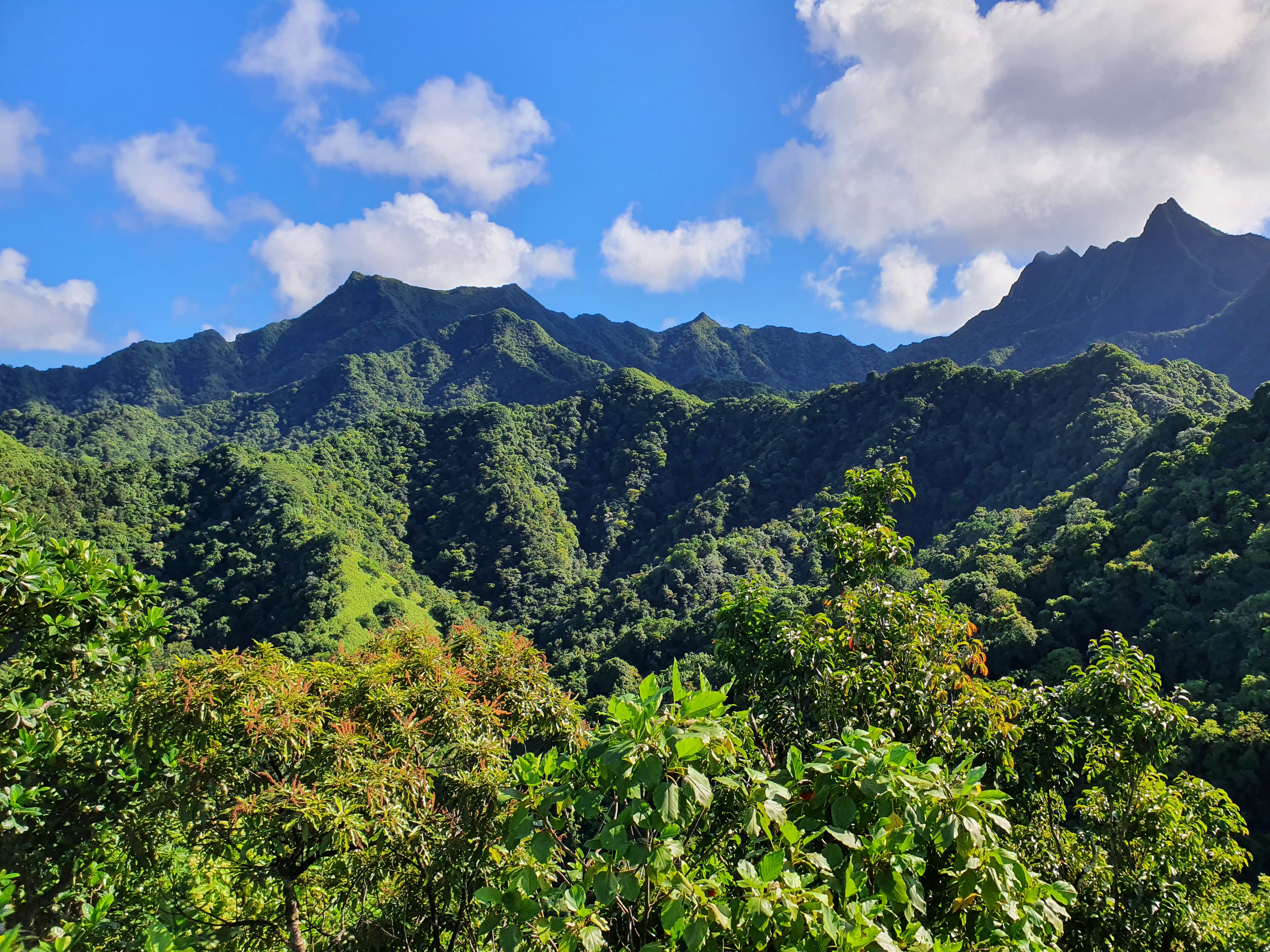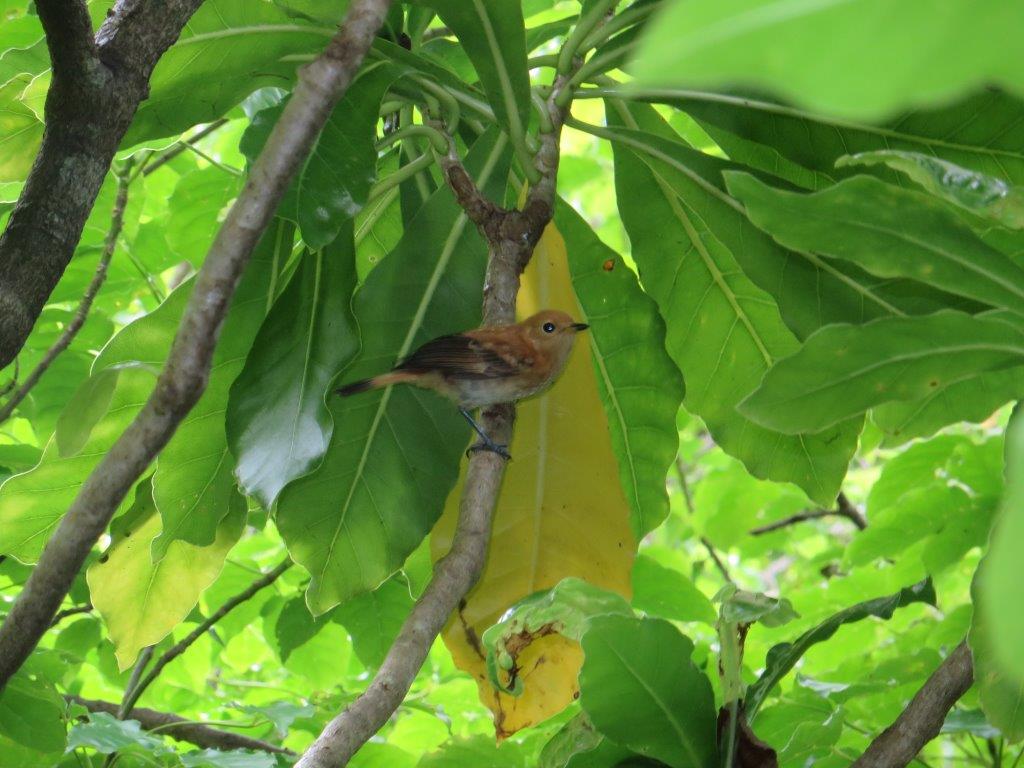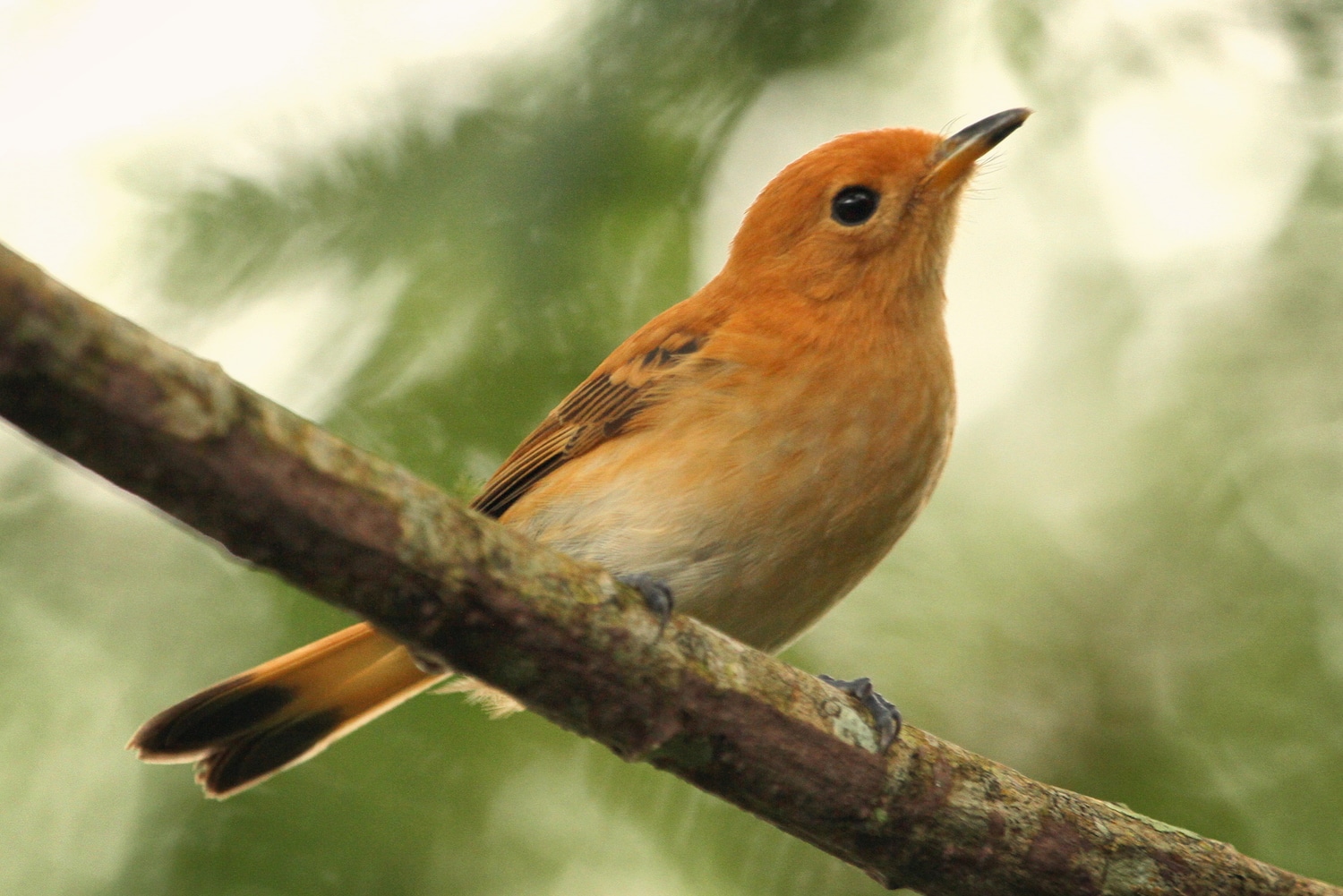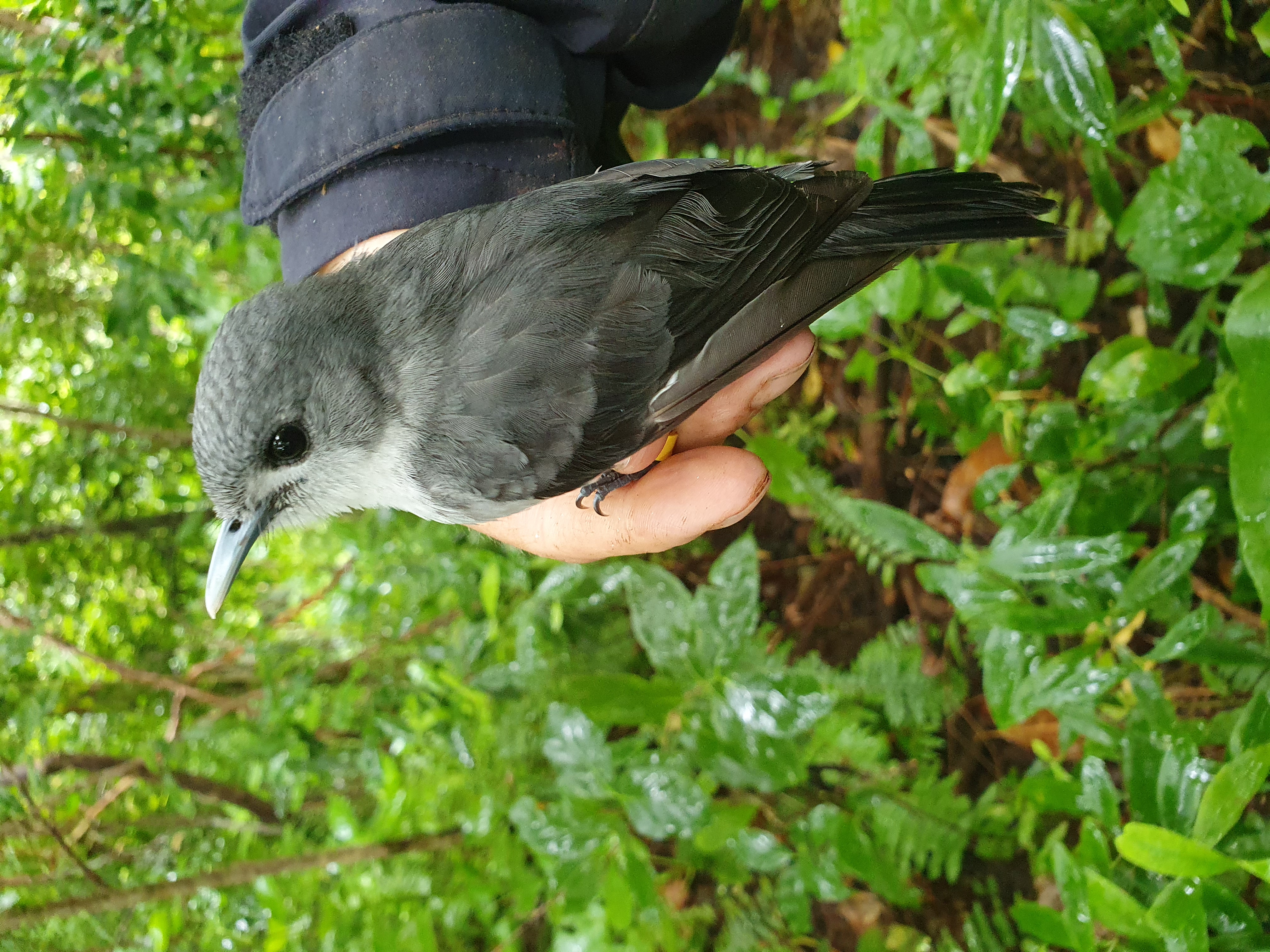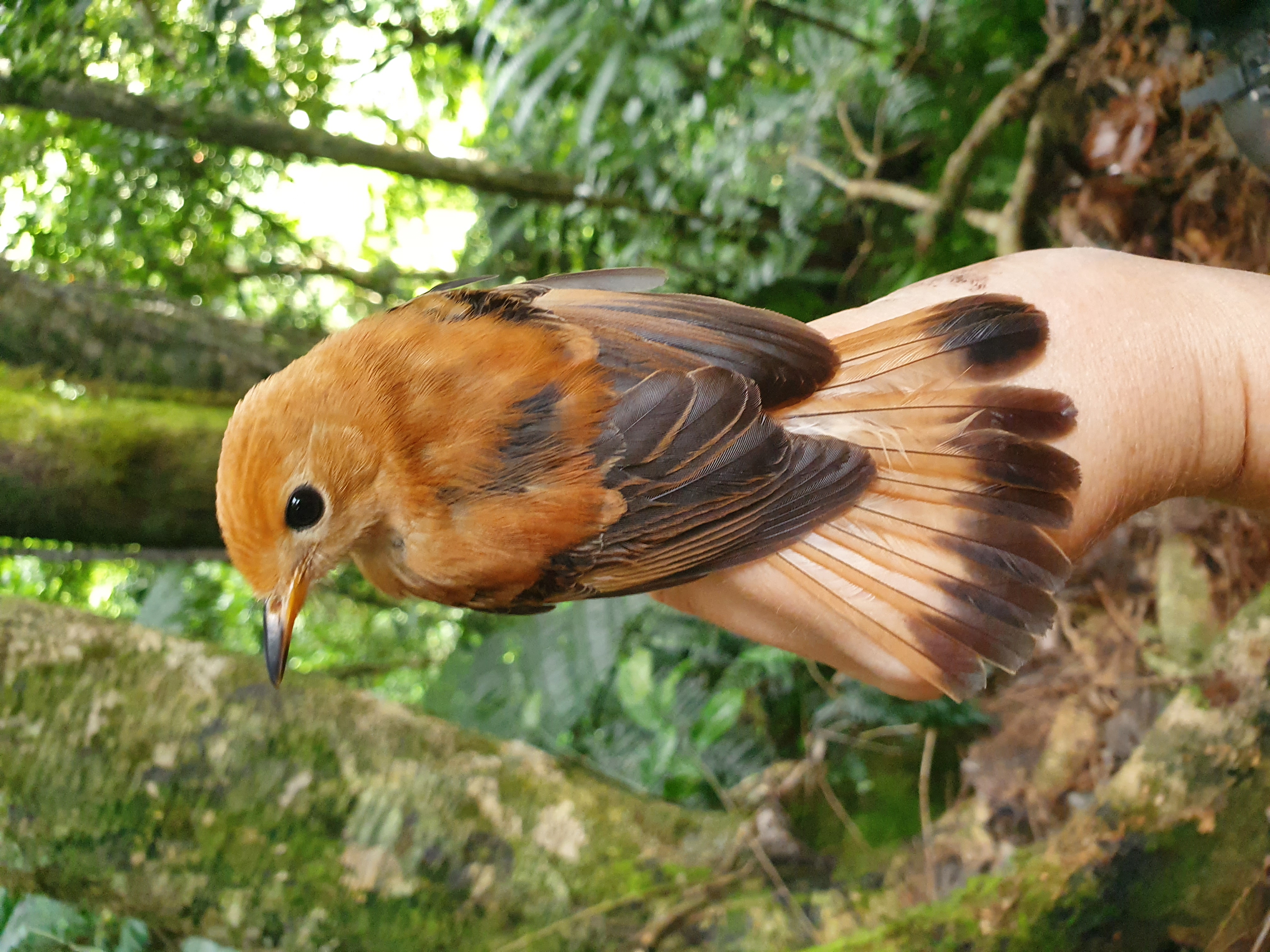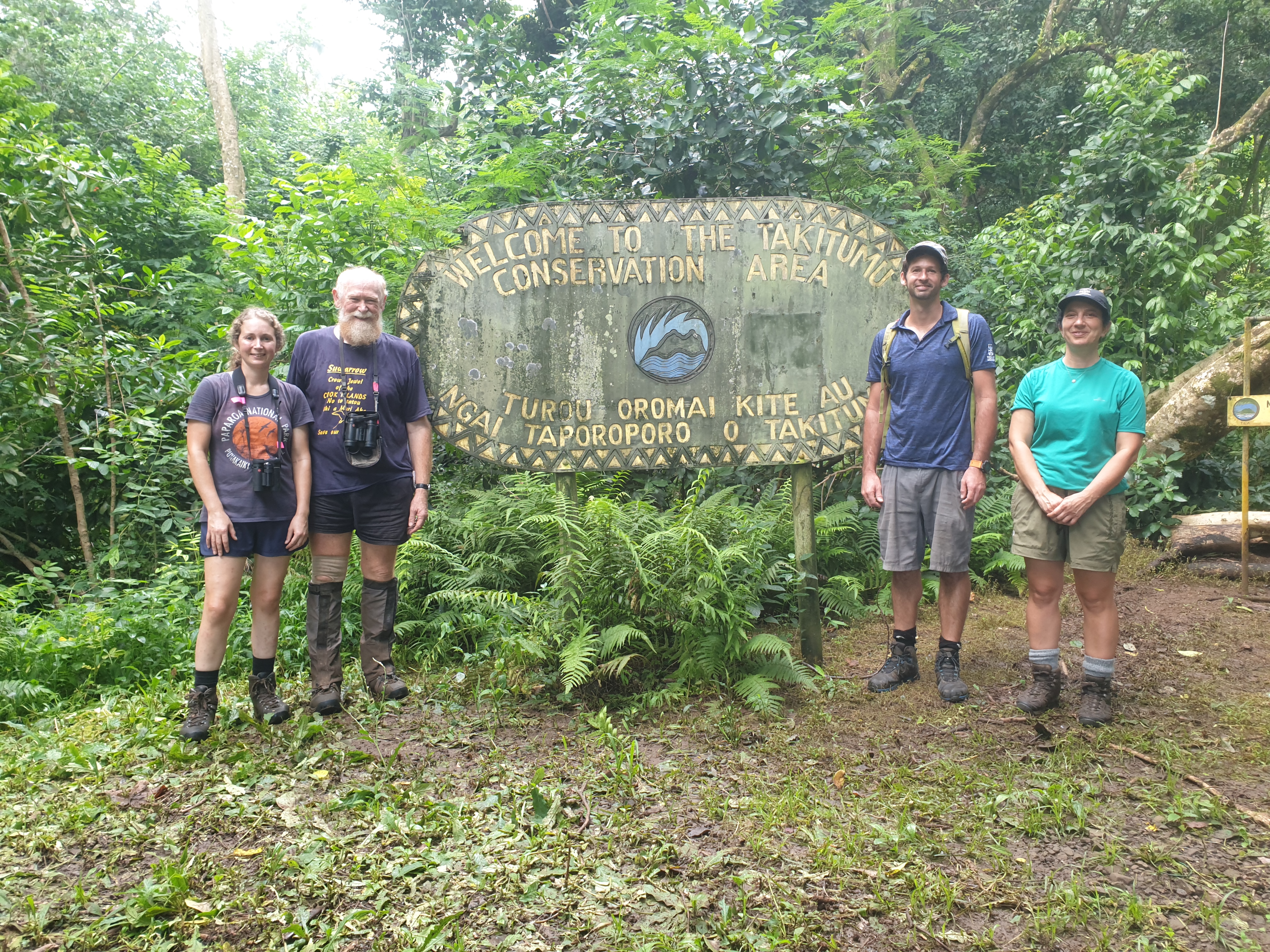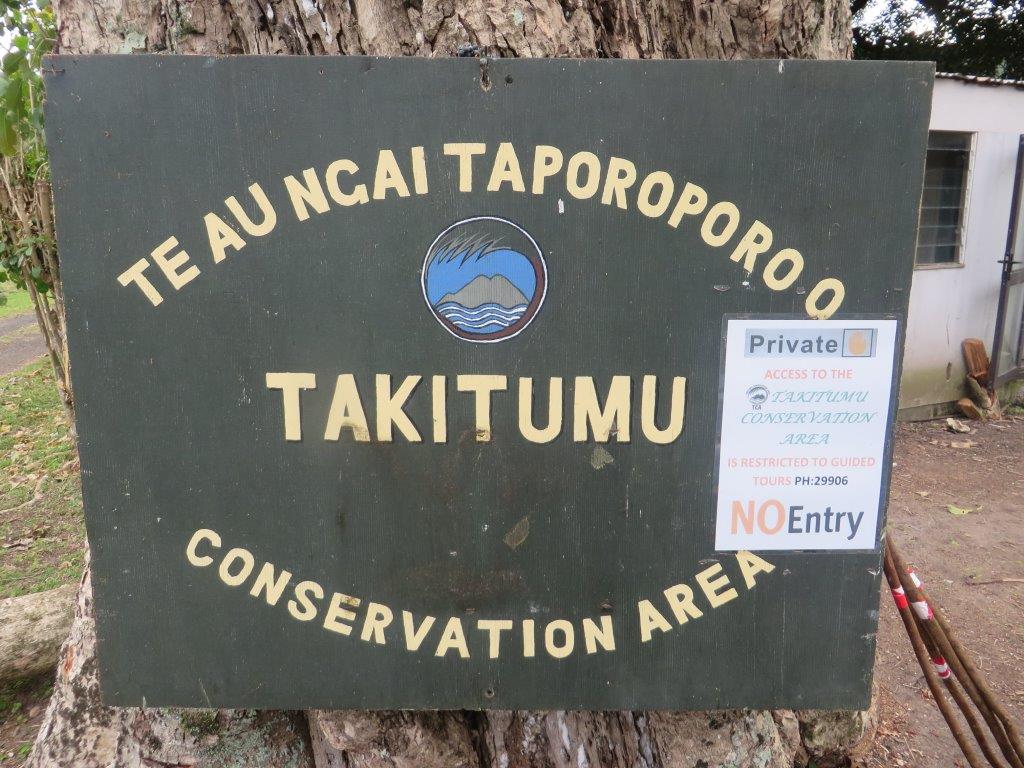In 1989 the kakerori (Rarotongan flycatcher) numbered only 29 birds. Since that time, an ongoing predator control programme has seen the population increase to ~400 birds on Rarotonga, with an additional population (thought to number ~150-200 birds) translocated on the nearby island of Atiu.
Kakerori Monitoring
Independent Consultants
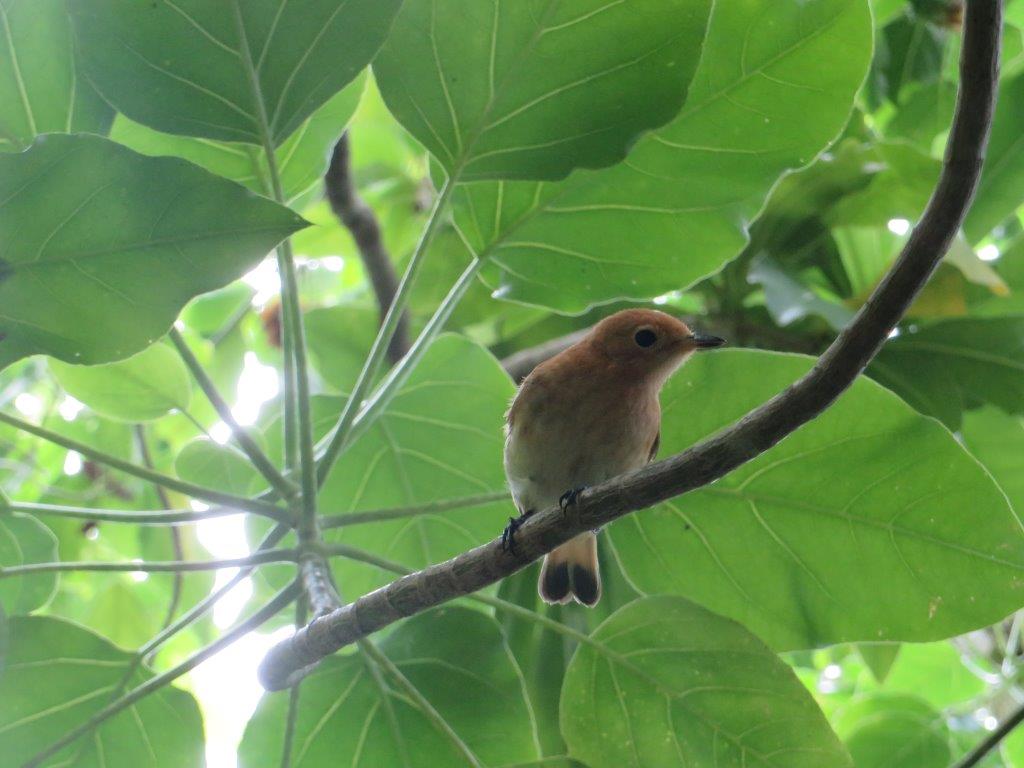
While eco-tourism and grants/donations from other sources fund the pest control programme, there is little support for the ongoing monitoring required to measure the response to pest control to ensure that it is effective in maintaining the population.
Although monitoring using Automatic Recording Devices (ARDs) has been trialled and is undergoing continued refinement, it has not yet been developed to the extent where it can reliably replace the intensive census work undertaken by experienced people.
The current monitoring regime undertakes a comprehensive census of the kakerori population within the Takitumu Conservation Area on Rarotonga every three years. During intervening years, capture and colour-banding of as many kakerori as possible is carried out (especially juveniles) as a minimum of 50% of all birds in the census area needs to be banded for the census to be effective. This work is almost entirely carried out by skilled volunteers and the Auckland Zoo Conservation Fund grant is to cover costs incurred by the ongoing monitoring project, in particular, flights, rental car, and banding equipment costs.
We believe in protecting wildlife, in the Pacific and beyond – and we know you do too!
Help us continue to support conservation efforts around the world.


